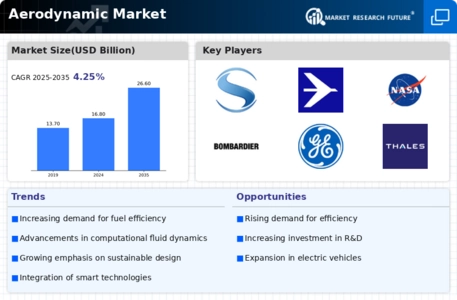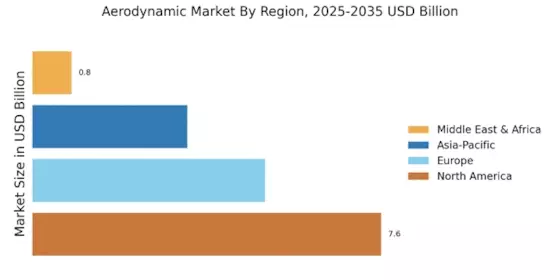Rising Demand for Fuel Efficiency
The Aerodynamic Market is experiencing a notable surge in demand for fuel-efficient vehicles. As consumers become increasingly aware of environmental issues and fuel costs, manufacturers are compelled to innovate. The integration of aerodynamic designs in vehicles can lead to a reduction in drag, thereby enhancing fuel efficiency. Reports indicate that vehicles with optimized aerodynamics can achieve up to 20% better fuel economy. This trend is not limited to passenger cars; commercial vehicles are also adopting aerodynamic features to meet regulatory standards and consumer expectations. Consequently, the Aerodynamic Market is likely to witness substantial growth as manufacturers prioritize fuel efficiency in their designs.
Growth of Electric and Hybrid Vehicles
The Aerodynamic Market is poised for growth due to the rising popularity of electric and hybrid vehicles. These vehicles often require specialized aerodynamic designs to maximize range and efficiency. As manufacturers strive to enhance the performance of electric vehicles, they are increasingly focusing on reducing drag through innovative aerodynamic solutions. The market for electric vehicles is projected to expand significantly, with estimates suggesting that by 2030, electric vehicles could account for over 30% of total vehicle sales. This shift is likely to propel the Aerodynamic Market forward as companies adapt to the evolving automotive landscape.
Increased Investment in Aerospace Sector
The Aerodynamic Market is benefiting from increased investment in the aerospace sector. As air travel demand continues to rise, aerospace companies are focusing on developing more efficient aircraft designs. Aerodynamics plays a crucial role in enhancing aircraft performance, fuel efficiency, and overall safety. Recent data indicates that the aerospace industry is expected to grow at a compound annual growth rate of over 4% in the coming years. This growth is likely to stimulate innovation within the Aerodynamic Market, as companies seek to create cutting-edge solutions that meet the demands of modern aviation.
Emerging Applications in Renewable Energy
The Aerodynamic Market is witnessing emerging applications in the renewable energy sector, particularly in wind energy. The design of wind turbines is heavily influenced by aerodynamic principles, as optimized blade shapes can significantly enhance energy capture. As the world shifts towards sustainable energy sources, the demand for efficient wind turbine designs is expected to rise. Reports suggest that the wind energy market could grow by over 10% annually, driving innovation in the Aerodynamic Market. Companies are likely to invest in research and development to create advanced aerodynamic solutions that improve the efficiency and effectiveness of renewable energy technologies.
Advancements in Computational Fluid Dynamics
The Aerodynamic Market is significantly influenced by advancements in computational fluid dynamics (CFD). These technologies enable engineers to simulate airflow over various surfaces, allowing for more precise aerodynamic designs. The ability to visualize and analyze airflow patterns has led to improved product development cycles and reduced costs. As a result, companies can create more efficient designs that enhance performance and reduce energy consumption. The increasing adoption of CFD tools is expected to drive innovation within the Aerodynamic Market, as firms leverage these technologies to gain a competitive edge in design and manufacturing.


















Leave a Comment